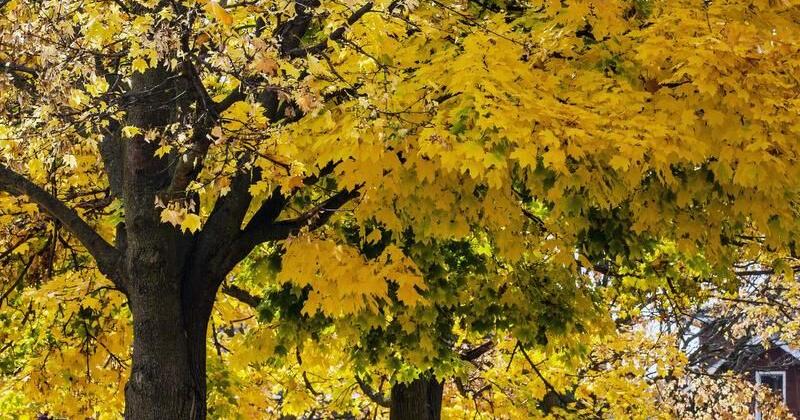What's your thought on hybrids? The street tree outside of my house is (I am mostly certain) an Autumn Blaze, which is a rubrum & saccharum hybrid. It has done exceptionally well on the boulevard between the sidewalk and road, and is probably over 20' tall in only about 7 years. It seems to combine the best traits of red/sugar/silver maples- fast growing, urban pollution tolerant and stunning fall colour.
edit- I realize I'm sounding like a salesman for Autumn Blaze maples here lol
Hybrids, or Cultivars as they tend to be called in the trade are interesting.
I have mixed views, because cultivars include different things, and have different impacts.
So, lets start w/the one you highlighted.
Autumn Blaze is a marketing name for an Acer Freeman. As you noted, Freemans are a cross between Red and Silver Maple, which essentially act like a Silver most of the year, but have red foliage in fall.
They have the durability of Silver, which does much better in urban environments than Reds, with a fall colour some find quite appealing.
Acer Freeman, in the sense of a red x silver hybrid is in fact a natural hybrid that occurs periodically in Ontario. In that sense it might be considered native, except, that in this case, this specific tree is the result of man-made efforts.
In general, I wouldn't be too unhappy w/that one..........but as as with all cultivars, there is one very compelling problem; they are genetic clones.
Acer Freemans all all genetically identical; which means, if any pest or disease comes along that affects one, it may well kill them all.
That's single most obvious downside of clones.
****
However, there are other issues; some cultivars are crosses between native and non-native plants or are entirely non-native. In either case, they can sometimes be invasive and severely impact our native forests.
Norway Maples and their assorted cultivars such as Crimson-King Maple (the one that turns purple from early summer) are a classic example of non-native, invasives.
But you also get into interesting questions, for instance, having introduced Dutch Elm disease many decades ago, and having had many Elms die off, there has been a constant search for disease-resistant specimens.
There are some pure native elms that appear to have high resistance and breeding efforts for those are ongoing.
But in the meantime, cultivar elms, typically crossing a Japanese Elm with a North American one are a popular route to finding a disease-resistant Elm.
For that reason, cultivars should really selected with great care.







